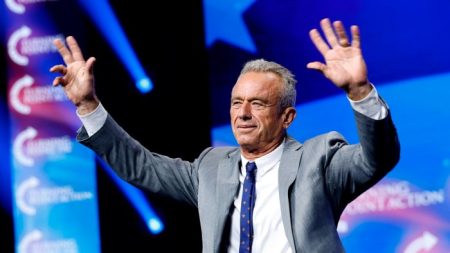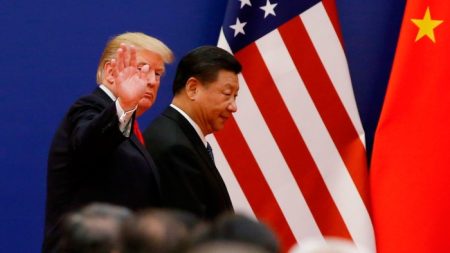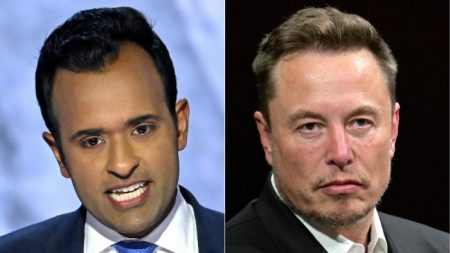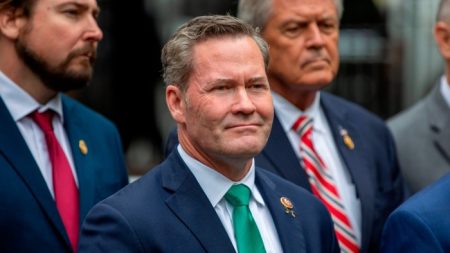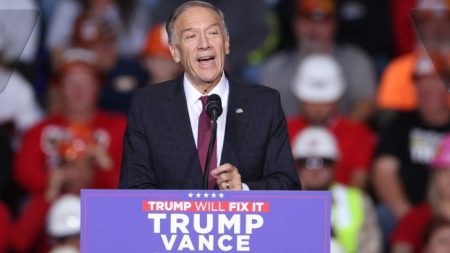Unlock the Editor’s Digest for free
Roula Khalaf, Editor of the FT, selects her favourite stories in this weekly newsletter.
Traders dialled back their bets on imminent Federal Reserve rate cuts after data showed US employers added 303,000 jobs in March, in a further sign of a buoyant labour market and a boost to President Joe Biden’s re-election bid.
The figures released on Friday by the US labour department were much stronger than the 200,000 job gains anticipated by economists polled by Reuters, and higher than those for January and February.
The unemployment rate edged down to 3.8 per cent, compared with a predicted 3.9 per cent.
The data comes as the Fed is weighing when to start cutting interest rates from their current range of between 5.25 per cent and 5.5 per cent.
Bond yields rose after the release, as investors scaled back bets that the Fed would cut interest rates three times this year. The two-year Treasury yield, which moves with interest rate expectations, rose, up 0.07 percentage points on the day to 4.71 per cent.
Stocks advanced, with the S&P 500 up 1.3 per cent just after midday in New York, recovering from a fall on Thursday that marked its biggest drop since mid-February.
Futures markets now indicate a roughly 60 per cent probability of a first rate cut by June, down from more than 70 per cent before Friday’s data.
“The Fed obviously won’t cut rates soon with jobs this strong and next week’s core [consumer price index] likely to remain hot,” said James Knightley, chief international economist at ING.
The figures provide a boost for Biden as he ramps up his campaign to retake the White House, touting his strong record on employment creation. Polls, however, have shown that voters disapprove of his economic performance, owing mainly to the surge in inflation during his first term.
Strong jobs data and higher-than-expected inflation figures in recent months have caused the Fed to signal there is no rush to start lowering interest rates.
This week, Fed chair Jay Powell said the economic outlook had not “materially changed”. However, he said he needed “greater confidence” that inflation was falling to the central bank’s 2 per cent target before cutting rates, saying there was “time” to weigh the decision.
Dallas Fed president Lorie Logan said in prepared remarks on Friday there were increasing risks that progress on inflation could stall. In light of those risks, she said, “I believe it’s much too soon to think about cutting interest rates.”
“It’s hard to look at this report and say, ‘the economy needs rate cuts’. But the Fed has said they want to cut rates,” said Dean Maki, chief economist at Point72.
“I don’t think this significantly reduces the odds that the Fed cuts rates as soon as June, because the Fed has said that is contingent on inflation data. Powell does not see a strong job market interfering with rate cuts as long as inflation is coming down,” he added.
Economists have cautioned that monthly job figures can be substantially revised over time, but the changes to January and February in the March report added a total of 22,000 jobs, bolstering the picture of a stronger labour market.
The monthly jobs report will become increasingly important to Biden’s re-election chances as the November vote draws closer.
“Today’s report marks a milestone in America’s comeback,” Biden said, ahead of a visit to Baltimore, Maryland, where the collapse of a bridge last month killed six workers at one of the east coast’s top commercial ports.
Biden added that the US economy had added more than 15mn jobs since he took office. “That’s 15mn more people who have the dignity and respect that comes with a pay cheque,” he said.
Employment growth was particularly strong in the healthcare, leisure and hospitality, and construction sectors, as well as in government jobs. Average weekly earnings and hours continued to rise last month.
The separate household survey showed a surge of 469,000 people into the US labour force, and an increase in the labour force participation rate. This will also bolster the case for the Fed to hold off on rate cuts, economists say.
“The remarkable strength of the US labour market, the stubborn persistence of inflation, and the continued easing of financial conditions undercut the case for imminent interest rate cuts,” said Eswar Prasad, an economics professor at Cornell University.
“The Fed has the luxury of waiting to ease monetary policy but is also constrained by sticky inflation dynamics, making it that much harder to predict the optimal moment to start cutting rates,” he added.
Additional reporting by Kate Duguid in New York
Read the full article here





